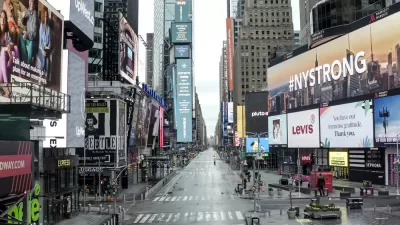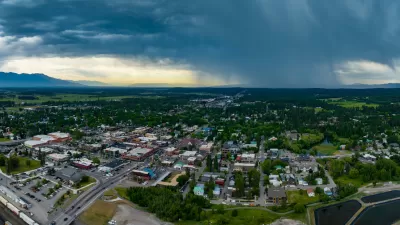International immigration to the country’s most populous areas tripled even as major metropolitan areas continued to lose population.

“The number of immigrants nearly tripled in the nation’s 20 most populous counties from 2021 to 2022, as immigration returned to prepandemic levels nationally, the Census Bureau reported on Thursday.” According to a New York Times article by Robert Gebeloff, Dana Goldstein, and Stefanos Chen, “Many of the newcomers were drawn to big cities with more liberal immigration laws and longstanding immigrant enclaves.”
Despite the rebound in international immigration, many of the country’s top counties lost population overall. “Los Angeles County in California, Cook County, which includes Chicago, in Illinois, and the boroughs of Brooklyn and Queens in New York all lost population, but the loss was smaller than in 2021.” Meanwhile, more affordable Sunbelt metro areas continued to draw more new internal migrants.
One exception was, surprisingly, New York City’s priciest borough. “Manhattan, the stand-in of choice for urban doomsayers, had a sharp turnaround: The borough added 17,472 residents in 2022, after a loss of nearly 100,000 the previous year — the biggest improvement in the nation.” The article notes it is the first time Manhattan saw a net gain in domestic migration since 2000 or earlier, despite sharply rising housing costs. “The median rent in Manhattan in June 2022, at the end of the census reporting period, was nearly $4,000, including landlord concessions — a jump of more than 28 percent from the same month the previous year.”
FULL STORY: Immigration Tripled in Top U.S. Counties Even as Many of Them Lost Population

Manufactured Crisis: Losing the Nation’s Largest Source of Unsubsidized Affordable Housing
Manufactured housing communities have long been an affordable housing option for millions of people living in the U.S., but that affordability is disappearing rapidly. How did we get here?

Americans May Be Stuck — But Why?
Americans are moving a lot less than they once did, and that is a problem. While Yoni Applebaum, in his highly-publicized article Stuck, gets the reasons badly wrong, it's still important to ask: why are we moving so much less than before?

Using Old Oil and Gas Wells for Green Energy Storage
Penn State researchers have found that repurposing abandoned oil and gas wells for geothermal-assisted compressed-air energy storage can boost efficiency, reduce environmental risks, and support clean energy and job transitions.

San Antonio Remains Affordable as City Grows
The city’s active efforts to keep housing costs down through housing reforms and coordinated efforts among city agencies and developers have kept it one of the most affordable in the nation despite its rapid population growth.

What Forest Service Cuts Mean for Cities
U.S. Forest Service employees work on projects that have impacts far beyond remote, rural wilderness areas.

North Texas Transit Leaders Tout Benefits of TOD for Growing Region
At a summit focused on transit-oriented development, policymakers discussed how North Texas’ expanded light rail system can serve as a tool for economic growth.
Urban Design for Planners 1: Software Tools
This six-course series explores essential urban design concepts using open source software and equips planners with the tools they need to participate fully in the urban design process.
Planning for Universal Design
Learn the tools for implementing Universal Design in planning regulations.
Heyer Gruel & Associates PA
City of Moreno Valley
Institute for Housing and Urban Development Studies (IHS)
City of Grandview
Harvard GSD Executive Education
Salt Lake City
NYU Wagner Graduate School of Public Service
City of Cambridge, Maryland





























